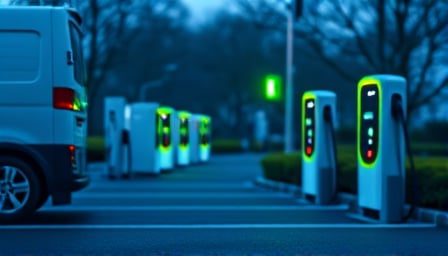Zhejiang Yinlun Machinery Co., Ltd. – Market Context and Strategic Outlook
Zhejiang Yinlun Machinery Co., Ltd. (SZ: 000123) has maintained a steady presence in the Chinese automobile‑components sector, specializing in a range of cooling solutions for power‑train and vehicle systems. With a market capitalization of approximately 36.7 billion CNY and a 52‑week price range between 16.4 CNY and 43.9 CNY, the company has experienced modest volatility in the broader Shenzhen market. The most recent close at 43.9 CNY matches the all‑time high recorded on 16 September 2025, indicating that the stock has reached a significant valuation milestone.
1. Market‑Wide Movements on 17–18 September 2025
During the trading week that included Zhejiang Yinlun’s most recent price peak, the Shanghai Stock Exchange index (沪指) hovered near the 3,900‑point barrier, ultimately closing at 3,831.66 points on 18 September after a decline of 1.15 %. This broader downturn was driven by a mix of profit‑taking and sector‑specific concerns, especially around energy‑intensive segments such as oil coolers and heat‑exchange systems.
In contrast, the Shenzhen ChiNext index (创业板指) experienced a robust rally, surging nearly 2 % to 3,147.35 points on 17 September. The surge was underpinned by strong performances in semiconductor, energy‑storage, and high‑tech hardware themes. Notably, the “liquid‑cooling server” niche, which is closely related to the products offered by Zhejiang Yinlun, saw several constituents (including 银轮股份 and 宁德时代) push into record highs.
These divergent trends underscore a sector‑specific rally for high‑tech cooling solutions, even as traditional manufacturing indices faced headwinds.
2. Industry Dynamics Favoring Cooling‑System Manufacturers
2.1 Growing Demand for Energy‑Efficient Vehicles
China’s 2025–2026 policy focus on new‑energy vehicles (NEVs) has amplified demand for efficient thermal management. The National Development and Reform Commission’s 136‑No. policy release earlier in September further incentivised the deployment of advanced energy‑storage and cooling systems. Manufacturers that can supply compact, high‑efficiency oil and thermal exchangers are poised to benefit directly from NEV production ramp‑ups.
2.2 AI and High‑Performance Computing
The “liquid‑cooling server” narrative has gained traction as artificial‑intelligence (AI) workloads intensify. With AI platforms such as Rubin and Feynman pushing power envelopes beyond 2,000 W, traditional air‑cooling solutions cannot meet the thermal‑load requirements. Companies that produce high‑density, micro‑channel liquid cooling panels—an area where Zhejiang Yinlun’s steel‑plate, concentric, and shell‑and‑tube coolers can play a complementary role—are therefore strategically positioned.
2.3 Consolidation and Supply‑Chain Reshaping
Recent earnings reports from industry peers, such as the 25Q2 revenue lift for passenger‑vehicle suppliers highlighted by 国联民生证券, reflect an expanding OEM base and higher production volumes. As automakers seek to streamline supply chains, they are more inclined to partner with vendors that provide integrated cooling solutions capable of meeting tightening safety and efficiency standards.
3. Zhejiang Yinlun’s Core Competencies
| Product Segment | Description | Market Relevance |
|---|---|---|
| Steel‑plate oil coolers | High‑strength, corrosion‑resistant plates that facilitate efficient heat dissipation | Critical for high‑torque powertrains in both ICE and hybrid vehicles |
| Concentric oil coolers | Compact design allowing installation in tight engine bays | Suited for NEVs and compact cars |
| Shell and tube oil coolers | Versatile configuration adaptable to various vehicle architectures | Preferred by OEMs for modular vehicle platforms |
The company’s product line aligns with the key pain points identified in the current market: the need for compact, high‑efficiency cooling in the face of increasing power densities, and the requirement for scalable, cost‑effective solutions across diverse vehicle segments.
4. Valuation Snapshot
With a price‑to‑earnings ratio of 44.09, Zhejiang Yinlun trades at a premium relative to its peer group. This premium reflects:
- Growth Expectations: Anticipated expansion in NEV production and AI‑driven demand for advanced cooling.
- Profitability Margins: The company’s historical focus on high‑margin components such as oil coolers.
- Capital Structure: A relatively low debt profile that supports flexible investment in R&D and capacity expansion.
Investors should monitor earnings releases for signs of accelerated revenue growth and margin improvement, which would validate the current P/E multiple.
5. Risk Considerations
- Commodity Price Volatility: Steel and other raw materials directly influence cost structures for cooling components.
- Regulatory Shifts: Changes in emission standards or thermal‑efficiency mandates could alter demand dynamics.
- Competitive Pressure: Entrants from overseas markets or domestic firms expanding their product portfolios may erode market share.
- Currency Fluctuations: As Zhejiang Yinlun serves a global customer base, RMB depreciation can impact export competitiveness and earnings repatriation.
6. Outlook
The intersection of NEV momentum and AI‑driven computing is generating a “cooling renaissance” across the automotive and data‑center sectors. Zhejiang Yinlun’s established expertise in oil and thermal exchangers positions it to capitalize on this dual‑drive. Provided that the company can continue to innovate—potentially exploring micro‑channel liquid‑cooling technologies—and maintain efficient cost controls, it stands to benefit from sustained demand growth.
In the near term, analysts should watch for:
- Quarterly earnings that confirm revenue acceleration tied to NEV production schedules.
- Supply‑chain announcements indicating new OEM contracts, especially within China’s NEV supply‑chain ecosystem.
- Strategic partnerships with AI server manufacturers that might open new distribution channels.
If Zhejiang Yinlun navigates these factors successfully, the firm could see its valuation converge with the upward trajectory observed in the broader high‑tech cooling segment.
